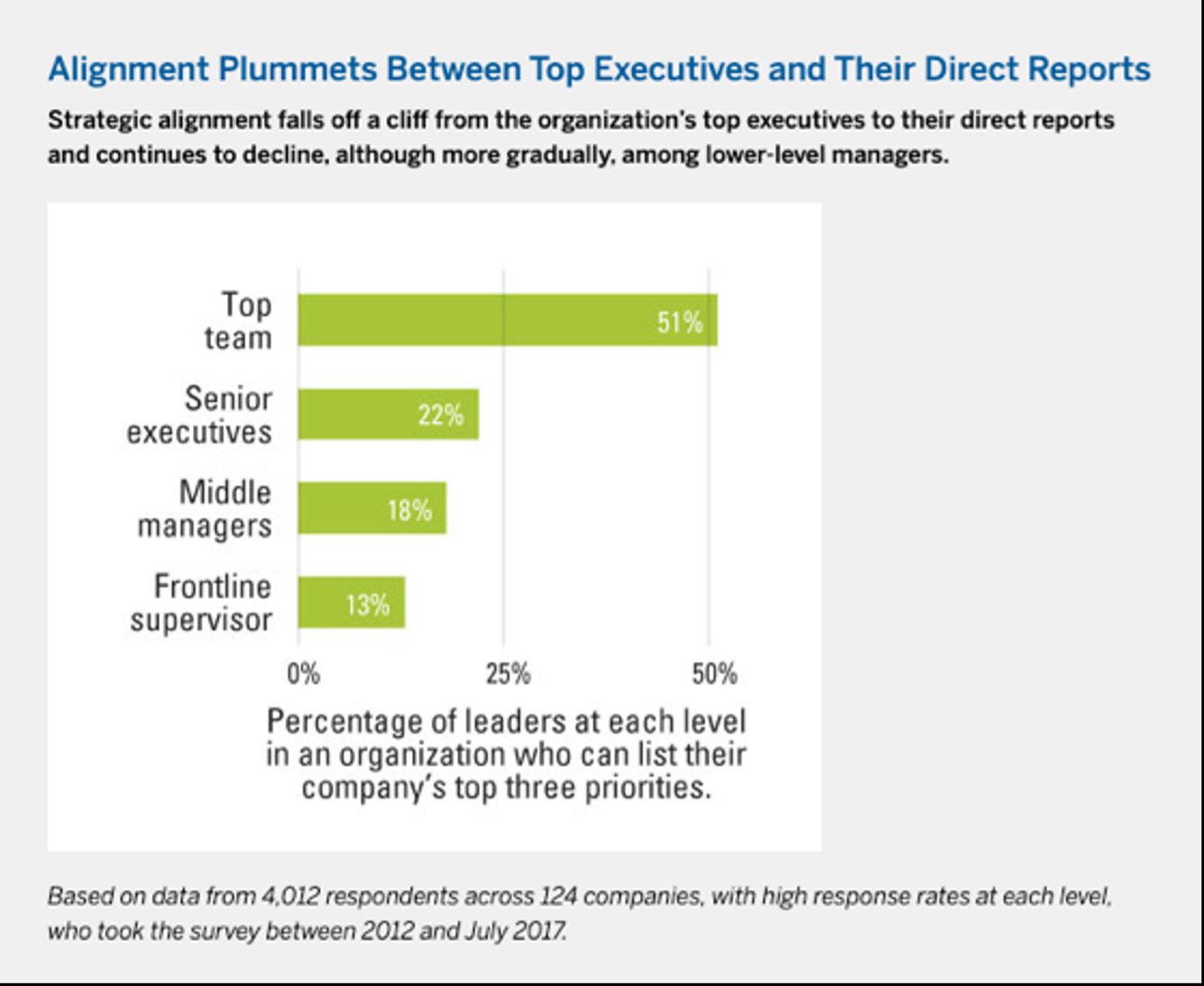Leverage OKRs to Achieve Breakthrough Portfolio and Investment Performance – Part 2
In the first installment we introduced this series, jointly produced by Adaptivity and WorkBoard. In this, the second installment, we’ll introduce a high-level explanation of the key elements of strategy realization, with the focus on processes, competencies, and techniques that enterprises must master to become more strategically adaptable and resilient than their competitors.

To ensure a firm can realize its current, static corporate strategy, it must develop basic strategy processes and capabilities. To master the corporate competency of adaptive strategy, the ability to respond to external threats rapidly and effectively enough to be resilient, it must develop advanced processes and capabilities. For the firm to use adaptive strategy as a competitive advantage, playing on offense as the disruptor in the marketplace, it must fully inculcate and embody the competencies of sense, learn, and adapt as well as mastering the competencies of strategy realization.
Far too many organizations (and strategy consultants) seem to think that the hard work of defining a great strategy represents the totality of their effort. They seem to think the hard work of deploying that strategy throughout the organization and tracking its execution over time should magically just happen – maybe the manager gnomes will do it off hours! As obviously delusional as this sounds, it is frequently the case. We know because we at Adaptivity have seen it again and again in consulting engagements where we often follow the big strategy consultancies, sometimes years after their departure. Often, the board and C-suite are embarrassed that the strategy isn’t being realized after they spent millions on consultants. Did the act of writing checks not make the strategy they bought manifest? The business press and academic studies show that 70% of organizations fail to implement their strategies successfully, so our observed experience is not aberrant.
As difficult as it is to develop key organizational competencies to realize the corporate strategy you bought from McBaneCGee a year or two ago, it is many times more difficult to develop the organizational capabilities to become strategically resilient (defense) and more difficult yet to become strategically disruptive on offense. The sense/learn/adapt behaviors and culture required to win in a fluid and dynamic battlefield could take years to develop.
Stepping back a bit to explore the competencies for strategy realization, Adaptivity would like to provide our perspective on the three distinct phases or processes to master in the strategy realization lifecycle. While the nomenclature may vary, the processes, competencies, and measures of maturity for each is distinct:
1. Strategy Definition (or formulation) – This is the process you paid the consultants to help you with, at the big executive retreat in Bimini a year and a half ago. It cost millions of dollars and many weeks of executive focus and attention. Now, the consultants are long gone, and the fruits of your investment reside as a bunch of ppt files on some hard discs and three ring binders. The Board loved the plan at the time, but it’s embarrassing to admit it hasn’t progressed to realization in any measurable way – in fact, last quarter, when HR did an employee engagement survey, it showed 70% of your employees have no idea what they should be focused on doing or why.
Here is an example of a typical “house of strategy” for a notional robotics company:

Typically your strategy is expressed with a vision and mission (together, your North Star). Often, organizations create strategic themes or pillars that contain a set of objectives (not illustrated here for simplicity). Three typical examples of strategic themes are: 1. Growth 2. People and culture and 3. Organizational efficiency. One excellent test of your strategy comes from Roger Martin – your strategy should answer the questions: “Where do we play?” and “How do we win?”. Everything beneath your North Star should be expressed in the long-term (3 – 5 year) and medium-term (one year) objective setting framework you are using for strategy deployment and execution, ideally Objectives and Key Results (OKRs).
2. Strategy Deployment – This is the big process that gets all the employees focused and aligned on the strategy. A good test for success is to demonstrate that every morning when employees start work, they KNOW EXACTLY what is the most important and impactful thing they should work on that day. Strategy deployment is composed of several components: decomposition, communication, and alignment of objectives. Your strategy at the corporate level starts with a North Star (vision and mission), and proceeds to long-term (typically three year) and one-year corporate objectives. Again, everything below the North Star is expressed in Objectives and Key Results (OKRs) for focus and accountability. Don’t misinterpret the word “decomposition” to advocate “cascading” objectives down the organization a la the MBOs of the bad old days. The superpowers that accrue from an OKR program largely derive from the process leveraging bottom-up engagement from organizational nodes and employees. They think deeply about the strategy and propose their own objectives that “ladder up” and align to the objectives of the company vertically, and other functions horizontally.
Annual objectives must be translated appropriately to business units, product lines, functional departments (HR, Finance, Marketing, etc) then decomposed further into quarterly OKRs for teams, departments, etc. It’s essential that we test for both vertical and horizontal alignment again and again as the strategy is being deployed. Vertical alignment is essential, lest we lose traceability to our North Star. Horizontal alignment is especially challenging in large traditional organizations because the functional silos of the organization are often parochial and locally optimized, but horizontal alignment is OKR’s killer feature – important initiatives usually require horizontal collaboration and dependency management across silos to succeed! Evidence shows corporations have a very poor record of successfully delivering strategic initiatives, largely because of the horizontal alignment and dependency management required to deliver them.

At the WorkBoard Accelerate Conference last year, strategy execution leaders learned of a WorkBoard client who, when performing alignment work in the WorkBoard platform, found over 700 teams working on the same annual result. They realized this redundancy was occurring because they were aligned vertically based on the construct of their organization chart but not horizontally where cooperation between silos would be required for success.
3. Strategy Execution (governance and accountability) – After successfully deploying the strategy, everyone in the organization knows their business unit’s goals, knows what the product lines should optimize for, knows what their team should be striving to achieve. The strategy has been expressed in inspiring objectives that are aligned horizontally and vertically, with concrete measures (Key Results) that demonstrate progress to plan. Of course, promulgating that information throughout the organization every quarter is a lot of work! Having deployed the strategy we can forget about the strategy process until the end of the quarter, right? NOOOOoooooooo!
As tempting as “set it and forget it” goal-setting sounds, the malign entropic force of Strategy Decay is lurking, awaiting your moment of complacency, to render all your good work asunder. The turmoil in typical business environments generates a lot of tactical noise around the strategic signal. Employees get distracted and confused as managers chase shiny objects and furry squirrels across the business landscape daily. Inevitably, some well-intentioned employees are paddling energetically off-course and straight towards the rocks!
The tendency of organizations to lose strategic focus over time was documented in MIT Slone’s 2018 research “No One Knows Your Strategy, Not Even Your Top Leaders”
How quickly can the organization discover the wayward course of these employees? How quickly can the organization get them refocused and realigned on course toward the North Star?
This ability to sense misalignment and intercede quickly is the essential capability of strategy execution governance. It requires constant vigilance and oversight though committed people, transparent and accurate data, and a process of regular inspection and intervention.
To conclude this episode: I assert that OKRs are the ideal means to implement mature and effective adaptive strategy deployment and strategy execution processes. This series specifically promises to address how OKRs used for strategy deployment enable breakthrough levels of performance in enterprise portfolio management and asset allocation.
In the next installment of this series, brought to you by Adaptivity and WorkBoard, I will flesh out the intersection of your OKRs and your portfolio vision and strategy. That will be followed by another instalment that delves more deeply into the most innovative and powerful techniques of modern adaptive portfolio management and asset allocation processes.
This series provides a host of (hopefully) intriguing insights to help organizations realize their strategic objectives and get better outcomes from their portfolio management and asset allocation processes. Implementing all the processes, practices, systems, and cultural and behavioral changes to make strategy reality in your organization requires expertise and experience. Adaptivity employs some of the leading experts in the field, and WorkBoard provides the leading enterprise strategy and OKR platform.
We’d like to hear about your challenges and goals and help you succeed!
We can be found at www.adaptivitygroup.com or www.workboard.com




